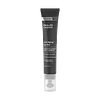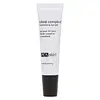What's inside
What's inside
 Key Ingredients
Key Ingredients

 Benefits
Benefits

 Ingredients Side-by-side
Ingredients Side-by-side

Water
Skin ConditioningCyclopentasiloxane
EmollientButylene Glycol
HumectantPentylene Glycol
Skin ConditioningTapioca Starch
Methyl Gluceth-20 Benzoate
EmollientGlycerin
HumectantDimethicone
EmollientCyclohexasiloxane
EmollientPolysilicone-11
Palmitoyl Tripeptide-38
Skin ConditioningCaprooyl Tetrapeptide-3
Skin ProtectingPalmitoyl Tripeptide-5
Skin ConditioningNiacinamide
SmoothingPhospholipids
Skin ConditioningHyaluronic Acid
HumectantSodium Hyaluronate
HumectantVitis Vinifera Seed Extract
AntimicrobialPanthenol
Skin ConditioningSalix Alba Extract
Skin ConditioningCamellia Sinensis Leaf Extract
AntimicrobialAdenosine
Skin ConditioningGlycyrrhiza Glabra Root Extract
BleachingPisum Sativum Extract
Skin ConditioningPolyacrylate Crosspolymer-6
Emulsion StabilisingDunaliella Salina Extract
Skin ConditioningHydroxypropyl Cyclodextrin
MaskingDextran
Polysorbate 20
EmulsifyingAmmonium Acryloyldimethyltaurate/Vp Copolymer
Disodium EDTA
Phenoxyethanol
PreservativeWater, Cyclopentasiloxane, Butylene Glycol, Pentylene Glycol, Tapioca Starch, Methyl Gluceth-20 Benzoate, Glycerin, Dimethicone, Cyclohexasiloxane, Polysilicone-11, Palmitoyl Tripeptide-38, Caprooyl Tetrapeptide-3, Palmitoyl Tripeptide-5, Niacinamide, Phospholipids, Hyaluronic Acid, Sodium Hyaluronate, Vitis Vinifera Seed Extract, Panthenol, Salix Alba Extract, Camellia Sinensis Leaf Extract, Adenosine, Glycyrrhiza Glabra Root Extract, Pisum Sativum Extract, Polyacrylate Crosspolymer-6, Dunaliella Salina Extract, Hydroxypropyl Cyclodextrin, Dextran, Polysorbate 20, Ammonium Acryloyldimethyltaurate/Vp Copolymer, Disodium EDTA, Phenoxyethanol
Water
Skin ConditioningCyclopentasiloxane
EmollientGlycerin
HumectantPropanediol
SolventButylene Glycol
HumectantDimethicone
EmollientPolysilicone-11
Ethylhexyl Hydroxystearate
EmollientHydroxyethyl Acrylate/Sodium Acryloyldimethyl Taurate Copolymer
Emulsion StabilisingAcacia Senegal Gum
MaskingNiacinamide
SmoothingAlbizia Julibrissin Bark Extract
MaskingCaprylyl Glycol
EmollientIsohexadecane
EmollientCitrus Aurantium Dulcis Callus Culture Extract
Skin ConditioningPhenoxyethanol
PreservativeFraxinus Excelsior Bark Extract
Skin ConditioningCarbomer
Emulsion StabilisingHydroxyethylcellulose
Emulsion StabilisingDecyl Glucoside
CleansingHexylene Glycol
EmulsifyingPentylene Glycol
Skin ConditioningAminomethyl Propanol
BufferingPolysorbate 60
EmulsifyingPotassium Citrate
BufferingSilanetriol
Hydroxypropyl Cyclodextrin
MaskingXanthan Gum
EmulsifyingMyristoyl Nonapeptide-3
Skin ConditioningCrocus Chrysanthus Bulb Extract
Skin ConditioningMyristoyl Hexapeptide-4
Skin ConditioningMyristoyl Pentapeptide-8
Skin ConditioningDipeptide Diaminobutyroyl Benzylamide Diacetate
Skin ConditioningAcetyl Tetrapeptide-5
HumectantDarutoside
Skin ConditioningPalmitoyl Tripeptide-38
Skin ConditioningWater, Cyclopentasiloxane, Glycerin, Propanediol, Butylene Glycol, Dimethicone, Polysilicone-11, Ethylhexyl Hydroxystearate, Hydroxyethyl Acrylate/Sodium Acryloyldimethyl Taurate Copolymer, Acacia Senegal Gum, Niacinamide, Albizia Julibrissin Bark Extract, Caprylyl Glycol, Isohexadecane, Citrus Aurantium Dulcis Callus Culture Extract, Phenoxyethanol, Fraxinus Excelsior Bark Extract, Carbomer, Hydroxyethylcellulose, Decyl Glucoside, Hexylene Glycol, Pentylene Glycol, Aminomethyl Propanol, Polysorbate 60, Potassium Citrate, Silanetriol, Hydroxypropyl Cyclodextrin, Xanthan Gum, Myristoyl Nonapeptide-3, Crocus Chrysanthus Bulb Extract, Myristoyl Hexapeptide-4, Myristoyl Pentapeptide-8, Dipeptide Diaminobutyroyl Benzylamide Diacetate, Acetyl Tetrapeptide-5, Darutoside, Palmitoyl Tripeptide-38
Ingredients Explained
These ingredients are found in both products.
Ingredients higher up in an ingredient list are typically present in a larger amount.
Butylene Glycol (or BG) is used within cosmetic products for a few different reasons:
Overall, Butylene Glycol is a safe and well-rounded ingredient that works well with other ingredients.
Though this ingredient works well with most skin types, some people with sensitive skin may experience a reaction such as allergic rashes, closed comedones, or itchiness.
Learn more about Butylene GlycolCyclopentasiloxane, or D5, is a silicone used to improve texture of products and trap moisture.
D5 is considered lightweight and volatile. Volatile means it evaporates quickly after application. Once evaporated, D5 leaves a thin barrier that helps keep skin hydrated.
It is also an emollient. Emollients help soften the skin and prevent water loss. Silicones create a silky texture in products. D5 helps other ingredients become more spreadable.
Studies show D5 is safe to use in skincare products. We recommend speaking with a skincare professional if you have concerns.
Learn more about CyclopentasiloxaneDimethicone is a type of synthetic silicone created from natural materials such as quartz.
What it does:
Dimethicone comes in different viscosities:
Depending on the viscosity, dimethicone has different properties.
Ingredients lists don't always show which type is used, so we recommend reaching out to the brand if you have questions about the viscosity.
This ingredient is unlikely to cause irritation because it does not get absorbed into skin. However, people with silicone allergies should be careful about using this ingredient.
Note: Dimethicone may contribute to pilling. This is because it is not oil or water soluble, so pilling may occur when layered with products. When mixed with heavy oils in a formula, the outcome is also quite greasy.
Learn more about DimethiconeGlycerin is already naturally found in your skin. It helps moisturize and protect your skin.
A study from 2016 found glycerin to be more effective as a humectant than AHAs and hyaluronic acid.
As a humectant, it helps the skin stay hydrated by pulling moisture to your skin. The low molecular weight of glycerin allows it to pull moisture into the deeper layers of your skin.
Hydrated skin improves your skin barrier; Your skin barrier helps protect against irritants and bacteria.
Glycerin has also been found to have antimicrobial and antiviral properties. Due to these properties, glycerin is often used in wound and burn treatments.
In cosmetics, glycerin is usually derived from plants such as soybean or palm. However, it can also be sourced from animals, such as tallow or animal fat.
This ingredient is organic, colorless, odorless, and non-toxic.
Glycerin is the name for this ingredient in American English. British English uses Glycerol/Glycerine.
Learn more about GlycerinThis ingredient is used in skincare as a delivery system.
It works by "encapsulating" active ingredients with its unique ring shape that is water-loving on the outside and oil-loving on the inside. This improves the stability and absorption of the product into the skin.
According to a manufacturer, it also offer some moisturizing effects.
Learn more about Hydroxypropyl CyclodextrinNiacinamide is a multitasking form of vitamin B3 that strengthens the skin barrier, reduces pores and dark spots, regulates oil, and improves signs of aging.
And the best part? It's gentle and well-tolerated by most skin types, including sensitive and reactive skin.
You might have heard of "niacin flush", or the reddening of skin that causes itchiness. Niacinamide has not been found to cause this.
In very rare cases, some individuals may not be able to tolerate niacinamide at all or experience an allergic reaction to it.
If you are experiencing flaking, irritation, and dryness with this ingredient, be sure to double check all your products as this ingredient can be found in all categories of skincare.
When incorporating niacinamide into your routine, look out for concentration amounts. Typically, 5% niacinamide provides benefits such as fading dark spots. However, if you have sensitive skin, it is better to begin with a smaller concentration.
When you apply niacinamide to your skin, your body converts it into nicotinamide adenine dinucleotide (NAD). NAD is an essential coenzyme that is already found in your cells as "fuel" and powers countless biological processes.
In your skin, NAD helps repair cell damage, produce new healthy cells, support collagen production, strengthen the skin barrier, and fight environmental stressors (like UV and pollution).
Our natural NAD levels start to decline with age, leading to slower skin repair, visible aging, and a weaker skin barrier. By providing your skin niacinamide, you're recharging your skin's NAD levels. This leads to stronger, healthier, and younger looking skin.
Another name for vitamin B3 is nicotinamide. This vitamin is water-soluble and our bodies don't store it. We obtain Vitamin B3 from either food or skincare. Meat, fish, wheat, yeast, and leafy greens contain vitamin B3.
The type of niacinamide used in skincare is synthetically created.
Learn more about NiacinamideThis synthetic, signal peptide has unique skin conditioning properties in that is a matrikine-mimetic compound.
First of all, Palmitoyl Tripeptide-38 is a signal peptide; signal peptides tell the body to create more collagen.
What is a matrikine-mimetic compound?
This peptide has the ability to mimic matrikines in skin. Our skin created matrikines by breaking down matrix proteins into peptides.
Matrikines play a role in:
Though further research is needed, this ingredient seems pretty promising. In one study, women over the age of 40 with visible photoaging used a vitamin C serum with this ingredient for 56 days (15% ascorbid acid, 5 ppm palmitoyl tripeptide‐38). The results found improvement in skin roughness and skin tone.
This peptide is also part of the famous Matrixyl synthe’6, a blend of ingredients that also includes glycerin, water, and hydroxypropyl cyclodextrin.
Learn more about Palmitoyl Tripeptide-38Pentylene glycol is typically used within a product to thicken it. It also adds a smooth, soft, and moisturizing feel to the product. It is naturally found in plants such as sugar beets.
The hydrophilic trait of Pentylene Glycol makes it a humectant. As a humectant, Pentylene Glycol helps draw moisture from the air to your skin. This can help keep your skin hydrated.
This property also makes Pentylene Glycol a great texture enhancer. It can also help thicken or stabilize a product.
Pentylene Glycol also acts as a mild preservative and helps to keep a product microbe-free.
Some people may experience mild eye and skin irritation from Pentylene Glycol. We always recommend speaking with a professional about using this ingredient in your routine.
Pentylene Glycol has a low molecular weight and is part of the 1,2-glycol family.
Learn more about Pentylene GlycolPhenoxyethanol is a preservative that has germicide, antimicrobial, and aromatic properties. Studies show that phenoxyethanol can prevent microbial growth. By itself, it has a scent that is similar to that of a rose.
It's often used in formulations along with Caprylyl Glycol to preserve the shelf life of products.
Polysilicone-11 is a film-forming silicone that creates a non-tacky and matte finish on the skin. It's commonly used to improve texture, absorb excess oil, and help active ingredients spread evenly.
Due to its "rubber-like" structure, it stays on the skin's surface instead of being absorbed. On the skin, it creates a flexible layer that enhances wearability and stability.
Water. It's the most common cosmetic ingredient of all. You'll usually see it at the top of ingredient lists, meaning that it makes up the largest part of the product.
So why is it so popular? Water most often acts as a solvent - this means that it helps dissolve other ingredients into the formulation.
You'll also recognize water as that liquid we all need to stay alive. If you see this, drink a glass of water. Stay hydrated!
Learn more about Water